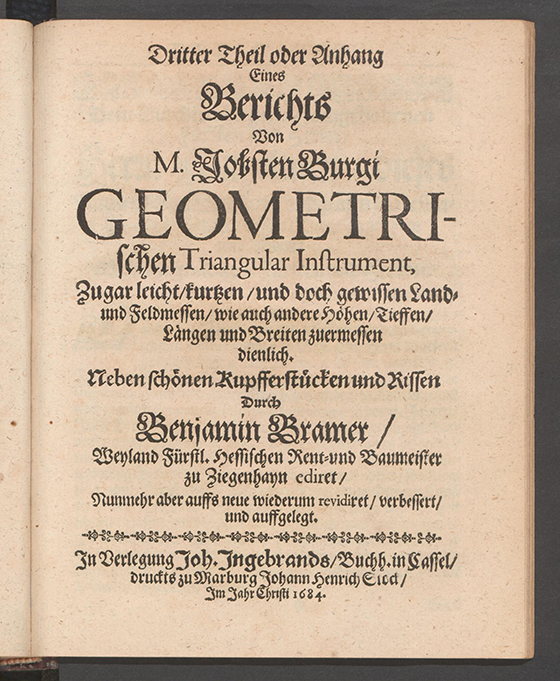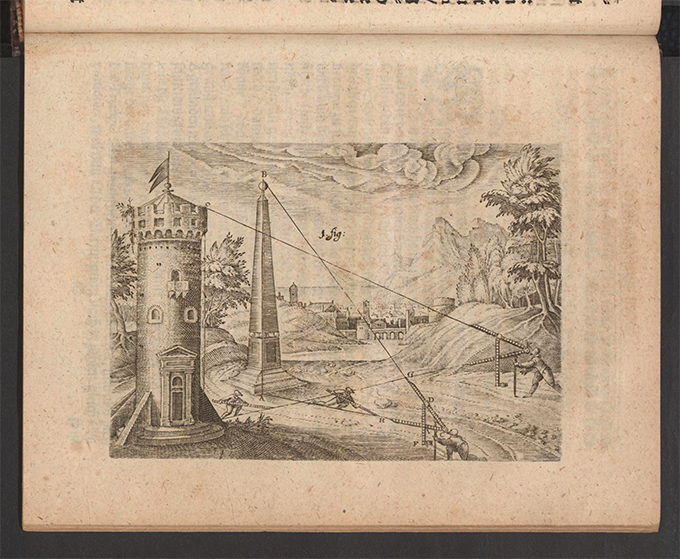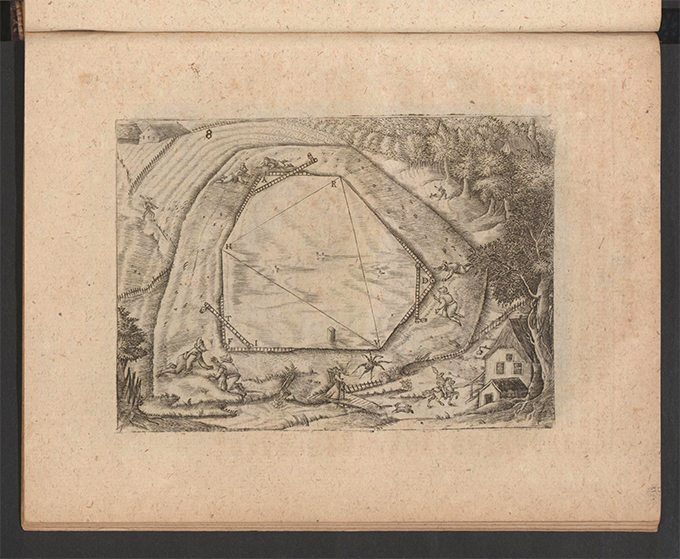- About MAA
- Membership
- MAA Publications
- Periodicals
- Blogs
- MAA Book Series
- MAA Press (an imprint of the AMS)
- MAA Notes
- MAA Reviews
- Mathematical Communication
- Information for Libraries
- Author Resources
- Advertise with MAA
- Meetings
- Competitions
- Programs
- Communities
- MAA Sections
- SIGMAA
- MAA Connect
- Students
- MAA Awards
- Awards Booklets
- Writing Awards
- Teaching Awards
- Service Awards
- Research Awards
- Lecture Awards
- Putnam Competition Individual and Team Winners
- D. E. Shaw Group AMC 8 Awards & Certificates
- Maryam Mirzakhani AMC 10 A Awards & Certificates
- Two Sigma AMC 10 B Awards & Certificates
- Jane Street AMC 12 A Awards & Certificates
- Akamai AMC 12 B Awards & Certificates
- High School Teachers
- News
You are here
Mathematical Treasure: Benjamin Bramer's Applied Geometry
Benjamin Bramer (1588-1652) was a German mathematician, architect and instrument maker. At an early age, Bramer was adopted by the Swiss mathematician and astronomer Jost Bürgi (1552-1632). Bürgi mentored his young charge in mathematics and scientific skills. In 1646-1647, Bramer published Apollonius Cattus, oder geometrischer Wegweiser. The last two words of the title mean "geometric signpost" and this earlier work can be viewed in its entirety on the e-rara website. This book was republished in 1684 as Apollonius Cattus oder … Geometriae, and pages from this latter book are featured here. In these books, Bramer stressed the applications of geometry and the use of measuring instruments.

Bramer used the frontispiece as a tribute to Bürgi, who had become his brother-in-law as well as his mentor. An excerpt of Bürgi’s work is also included as a section in the text.

Bramer’s experience as an architect and builder of fortifications influenced his dynamic view of geometric objects. He often projected cross-sections to understand shapes.




The opening page of Bürgi’s contribution:

The following five images provide a sampling of the surveying and measuring situations considered in Bürgi’s presentation. Figure I illustrates the measurement of inaccessible heights.

Plate 8 demonstrates the triangulation of an open field.

Plate 15 shows how to utilize available heights to obtain distance measures to remote structures.

Plate 19 shows the surveyor how to measure (or estimate) the height of a cloud. The line that begins "Die höhe …" on page 20 (shown below) translates literally as "The height of a Cloud from the Earth to measure."


The images above are presented courtesy of ETH-Bibliothek Zürich and the work may be viewed in its entirety via e-rara.
Frank J. Swetz (The Pennsylvania State University), "Mathematical Treasure: Benjamin Bramer's Applied Geometry," Convergence (August 2018)




